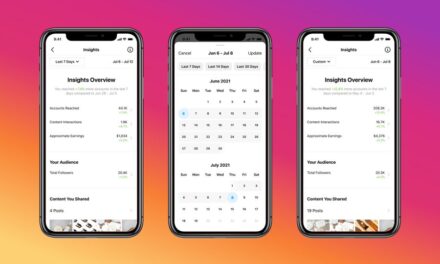Repost from: https://socialmediaweek.org/blog/2018/06/why-influencer-marketing-is-more-than-a-brand-awareness-channel/
There’s a common fallacy that exists in the marketing industry that data is for performance marketers and creative is for brand marketers.
At Social Media Week Los Angeles, Angela Seits, Director of Social Media & Influencer Marketing, PMG cleared away some assumptions to focus on the need for performance and brand to work together within the influencer marketing industry.
Seits argued the following myths:
Micro influencers are better than macro influencers.
Studies show that mid-tier creators, the ‘power-middle’, prove more engaging, trustworthy than both celebs and micro influencers. In fact, different goals require different influencers.
There’s a proprietary method to match you with the right influencer.
Seits queried the method and accuracy of results during the matching process, stating that the focus should be on testing how well an influencer matches your objectives and whether a partnership is moving the needle over time.
“When you look at the data points used for matching, it’s not that complicated”, said Seits. The data points usually provided include social value, quantitative and qualitative brand criteria and performance indexing for engagement, saturation and outside moment value. The output score is a prediction of how well the influencer will resonate with your target audience.
Brand safety is 100% guaranteed
Seits said you need to acknowledge that with any media efforts, it can sometimes be a wild card situation once creative or media is received by your audience. Risk is unavoidable. Influencers are some of the best content producers in the world, but humans can, and do, make mistakes.
She offered some tips to control such risks:
- Reach – use tools and human vetting to detect unusual spikes in follower count and engagement for signs of bots or fake followers
- Compliance – monitor to see if influencers are following proper FTC disclosures, such as using #ad and #sponsored within their content
- Content – consider alignment with your brand values, not just aesthetics
- Placement – ensure that content runs on brand-safe channels
Measurement: True ROI Vs Earned Media Value
Seits discussed the commonly accepted methods for measuring the impact of influencer marketing. Some believe influencer marketing works better as a brand awareness channel, therefore, do not invest heavily in measurement. A second school of thought, however, says you can accurately measure true ROI.
Seits believes the truth is somewhere in between these two spaces. Her experience is that many in the industry are still relying on vanity metrics, while others claim to be measuring ROI but are essentially measuring using an earned media value.
But, argues Seits, influencer marketing needs more sophisticated and holistic measurement because it is not just a brand awareness channel… it drives a variety of KPIs, including sales, and therefore needs measurement that’s based on more than just earned media value or last click attribution.
Maximizing Influencer Partnerships
Co-creating content with influencers, treating them as brand advocates and not simply a brand mouthpiece, will strengthen the message authenticity, and value of influencer partnerships. When influencers are given the opportunity to co-create with a brand, they create content that truly resonates with their audience and studies have shown that authentic content drives stronger performance.
ROI can be improved by going beyond organic reach. Data-driven amplification and paid distribution tactics are required to help move customers through the marketing funnel.
Seits suggested using performance marketing tactics to improve audience targeting such as utilizing custom audiences and retargeting, and moving customers from discovery to consideration to purchase by incorporating influencer content into upper, mid, and lower funnel marketing tactics, a method proven to drive more awareness, engagement, and conversions. And of course, ROI.
An integrated model for influencer marketing
If the influencer marketing industry is to grow there is a need to be more sophisticated in measuring campaigns. Performance and brand marketing approaches need to work together, with an integrated marketing model and standardised rigour.















